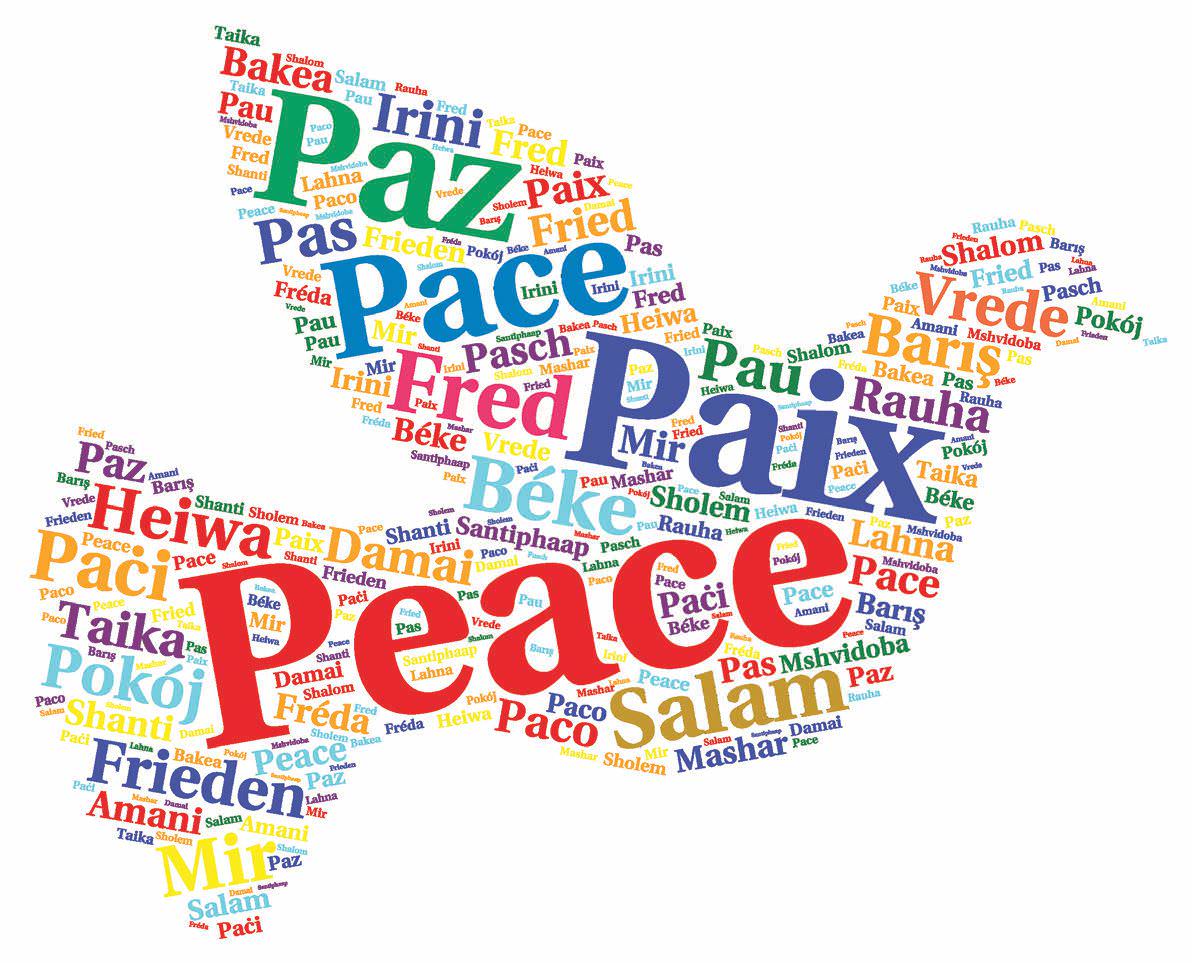Shalom, Salaam, Aloha: Peace is the ultimate challenge of our time.

But what does peace mean? The English word “peace” derives from the Latin pax and means “freedom from civil disorder.” To the Romans, peace signified absence of war. On the contrary, to the Chinese, peace is a feeling of contentment not necessarily connected to a peaceful society. The Hebrew shalom and the Arabic salaam give the term peace a deeper value. They mean not only safety, but also friendliness and wellness. In Japanese, peace is heiwa, in French paix, in Italian, pace, in Spanish, paz, and in German, frieden. Many peoples use the word peace as a greeting. Ethiopians say “Selam,” Iranians “As-Salamu ‘Alaykum,” and Hawaiians “Aloha.”
The Latin philosopher Cicero defined peace as “freedom in tranquility.” He believed people needed a nonviolent society to enjoy their freedom. In ancient times, wars were very frequent. Combat was hand-to-hand. The Romans fought with swords, javelins, and darts; the Vikings with knives and axes; and the Mongols with scimitars (curved swords) and bows and arrows.
Bu hikaye Faces - The Magazine of People, Places and Cultures for Kids dergisinin April 2018 sayısından alınmıştır.
Start your 7-day Magzter GOLD free trial to access thousands of curated premium stories, and 9,000+ magazines and newspapers.
Already a subscriber ? Giriş Yap
Bu hikaye Faces - The Magazine of People, Places and Cultures for Kids dergisinin April 2018 sayısından alınmıştır.
Start your 7-day Magzter GOLD free trial to access thousands of curated premium stories, and 9,000+ magazines and newspapers.
Already a subscriber? Giriş Yap

Animal Central
From golden frogs to big cats to colorful birds, the national animals of Central America represent the geography and cultures of the region. For a quick sampling of creatures plain and beautiful, common and rare, read on.

31 Countries Biosphere
The Trifinio Fraternidad Biosphere Reserve is located at a spot where El Salvador, Guatemala, and Honduras converge. A biosphere is the layer of planet Earth where life exists.

THE LEGEND OF THE QUETZAL BIRD
A Mayan Tale retold by Pat Betteley illustrated by Amanda Shepherd

Semana Santa GUATEMALA'S HOLY WEEK
What if Easter preparations meant dyeing sand, collecting pine needles, and staying up all night to work on an art project that you knew would be ruined the very next day? Well, welcome to Guatemala’s Semana Santa, or Holy Week.

ME OH-MAYA!
The Maya are groups of people who live in parts of Mexico, Honduras, and Guatemala. Their ancestors created a great society. At its peak, from 600-900 C.E., the Maya civilization was more advanced than its neighbors in the Americas.

Playing Games Honduras-style
Would you play the same games in Honduras that you do in the United States? You might. Children in Honduras enjoy many of the same games North Americans do. They go fishing and shoot baskets. They play sandlot baseball—called bate (BAH tay). They fly kites and ride bikes. Their parents may go horseback riding or play golf or tennis.

LIVING A LONG LIFE IN THE Blue Zone
Most people would like to live as long a life as possible. No one really knows why some people live longer than others, but did you know that where you live can play a big part in how many years you’ll be alive? If you live in a Blue Zone, chances are that you will live much longer than people in other parts of the world.

ATTENTION WORLD: Belize Saves Their Coral Reef
Sea turtles float in clear waters, colorful corals hug the ocean floor, and aquatic animals glide among the mangrove roots. Welcome to the Belize Barrier Reef Reserve System, the second-largest coral reef in the world (Australia’s Great Barrier Reef is number one). Several years ago, this reef was in crisis, heading toward destruction. But the people of Belize fought back to save their reef’s health.

The Panama Canal
The Panama Canal is a 51-mile long canal that connects the Atlantic and Pacific oceans.

This is Central America!
It’s time to visit Central America. But first, it helps to know exactly where Central America is. Despite its name, it is the southernmost part of North America, which can seem a little confusing. It makes up most of the isthmus dividing the Pacific Ocean from the Caribbean Sea. An isthmus is a narrow strip of land that connects two larger landmasses and has water on both sides.